It took me ages to go through all the photos and bits of info scribbled all over flyers and scraps of papers but here’s finally a few notes about the Fotofestiwal which closed in Łódź a couple of weeks ago
When it was first launched in 2001, the Fotofestiwal was the first independent photography event of its kind in Poland. I had never visited the festival before but the program looked good: young talents, Eastern European artists whose work was new to me and a few blockbusters which, this year, included Roger Ballen‘s portraits of marginalized people in absurd settings and Volker Hinz‘s quirky portraits of fashion stars and celebrities of the 20th century. Predictable blogger that i am, i only had eyes for the new names and the socially-engaged exhibitions. So that’s what this report from the festival is going to focus on. That and the city.
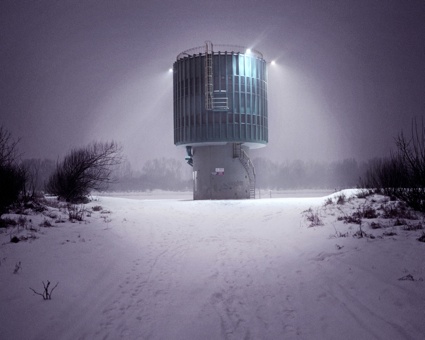 Agnieszka Rayss, No Man’s Land, Grand Prix Fotofestiwal 2014
Agnieszka Rayss, No Man’s Land, Grand Prix Fotofestiwal 2014
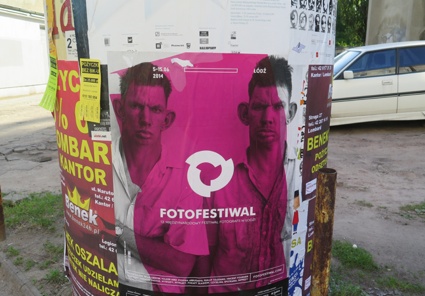
I really really enjoyed Łódź. I discovered the city by following the parcours of exhibitions and by getting lost on my way from one abandoned courtyard to a world famous National School of Film, from a street art mural to all kind of ex-industrial buildings spectacularly converted into art centers or shopping malls.
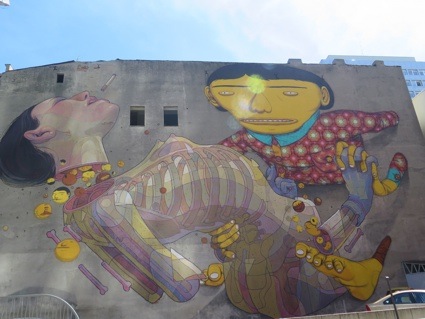 Os Gemeos + Aryz (better images at Unurth)
Os Gemeos + Aryz (better images at Unurth)
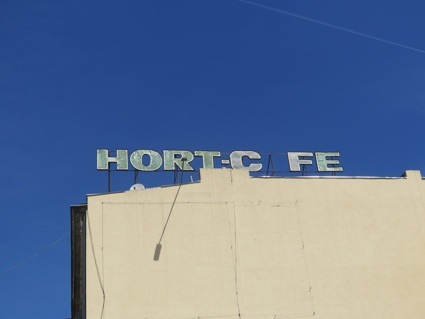
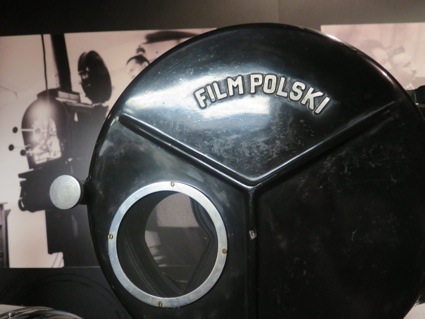 At the Museum of Cinematography
At the Museum of Cinematography
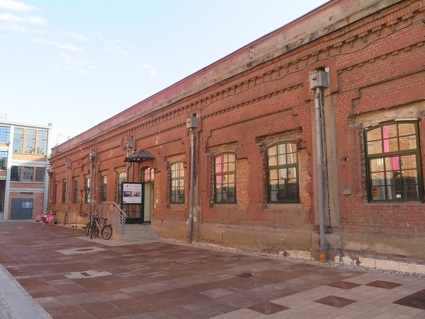 Fabryka Sztuki
Fabryka Sztuki
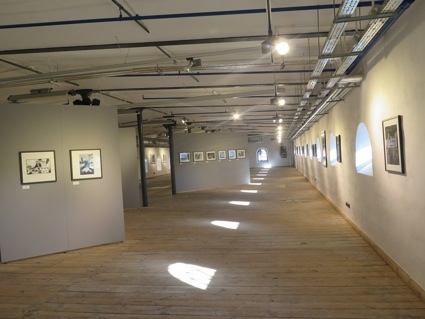 Inside Fabryka Sztuki
Inside Fabryka Sztuki
But let’s get back to the exhibitions.
First stop: the big warehouses of Fabryka Sztuki where i saw the work of the winners of the Leica Oskar Barnack Award 2013: Evgenia Arbugaeva who traveled back to the Siberia of her childhood, and Ciril Jazbec who documented the life of the ‘first climate refugees.’
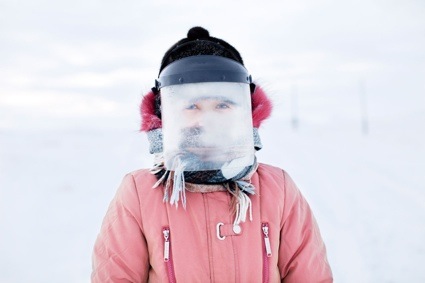 Evgenia Arbugaeva, Tiksi, the Far North (Astronaut on Neptune, or Tanya wears snow mask), January 2011
Evgenia Arbugaeva, Tiksi, the Far North (Astronaut on Neptune, or Tanya wears snow mask), January 2011
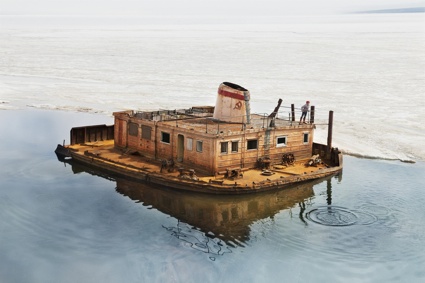 Evgenia Arbugaeva, Tiksi, the Far North, 2011
Evgenia Arbugaeva, Tiksi, the Far North, 2011
Evgenia Arbugaeva grew up in Tiksi, the most northerly settlement with a population of (barely) over 5,000. She came back to her home town 20 years after having left to live abroad. She photographed the Tiksi of her childhood memories. Her other objective was to capture a town “in the middle of nowhere,” before it disappears.
She explained in an interview with Leica camera blog: Under the USSR, Tiksi was to be an important seaport on the Northern Sea Route. In those times the government put a lot of energy into development of the Arctic regions building military bases, meteorological stations, towns, etc. After the fall of the USSR all these projects went into decline, people left and ships stayed, rusting in seawater. It’s scary to see those monuments to what was once a big dream of the great North.
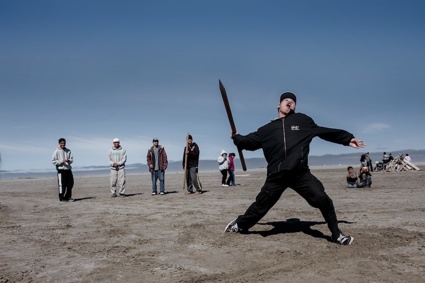 Ciril Jazbec, Waiting to Move (Harvey “Morshik” Tocktoo throwing an Inuit harpoon at the traditional wellness picnic held by the town council to help against suicides among the youth)
Ciril Jazbec, Waiting to Move (Harvey “Morshik” Tocktoo throwing an Inuit harpoon at the traditional wellness picnic held by the town council to help against suicides among the youth)
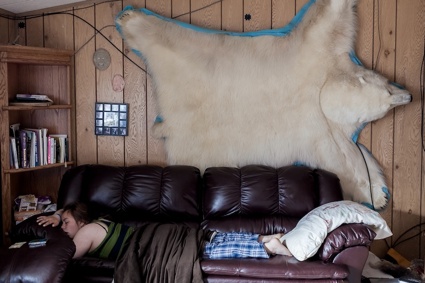 Ciril Jazbec, Waiting to Move (Living room of Deniss Sinnok, widely considered the best hunter in the locale. He shot the polar bear a few years ago, on a walrus hunt. Sleeping on the couch in front of the TV is his daughter Hillary.)
Ciril Jazbec, Waiting to Move (Living room of Deniss Sinnok, widely considered the best hunter in the locale. He shot the polar bear a few years ago, on a walrus hunt. Sleeping on the couch in front of the TV is his daughter Hillary.)
Ciril Jazbec, Waiting to move documents life on an island no wider than 400 meters and 5 kilometers in length, in Alaska. The island is threatened by the effects of climate change: erosion, storms and inclement weather, as well as by the thawing of permafrost. Al Gore referred to its inhabitants, a modern Inupiaq Eskimo community called Shishmaref, as the first climate refugees.
The most exciting exhibition for me however was the Grand Prix Fotofestiwal, a competition for young artists with ‘cohesive ideas’ and ‘brave visions.’ I already blogged my two favourite: A guide to life forms altered by the human species and Norilsk, daily life inside an environmental disaster.
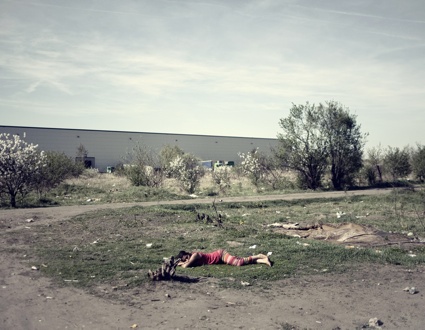 Adam Lach, Stigma, Grand Prix Fotofestiwal 2014
Adam Lach, Stigma, Grand Prix Fotofestiwal 2014
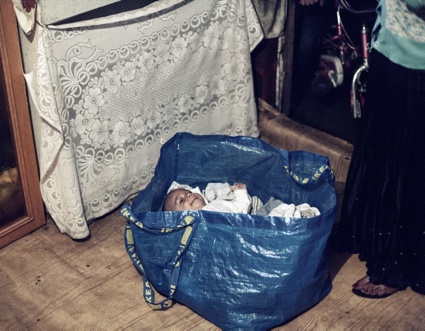 Adam Lach, Stigma, Grand Prix Fotofestiwal 2014
Adam Lach, Stigma, Grand Prix Fotofestiwal 2014
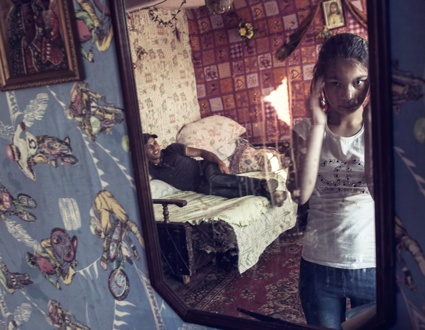 Adam Lach, Stigma, Grand Prix Fotofestiwal 2014
Adam Lach, Stigma, Grand Prix Fotofestiwal 2014
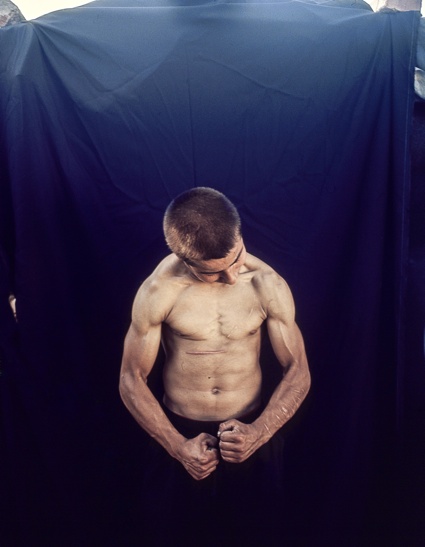 Adam Lach, Stigma, Grand Prix Fotofestiwal 2014
Adam Lach, Stigma, Grand Prix Fotofestiwal 2014
The Stigma Project shows the private life of a family of Roma, living in an encampment on the outskirts of Wroclaw in Poland.
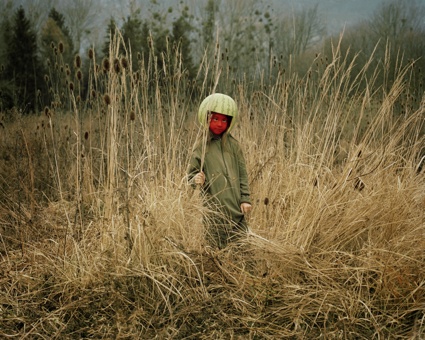 David Favrod, Gaijin, Mishiko, Grand Prix Fotofestiwal 2014
David Favrod, Gaijin, Mishiko, Grand Prix Fotofestiwal 2014
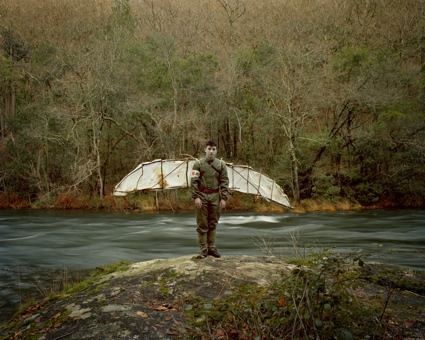 David Favrod, Gaijin, Vent divin, Grand Prix Fotofestiwal 2014
David Favrod, Gaijin, Vent divin, Grand Prix Fotofestiwal 2014
David Takashi Favrod is the son of a Japanese mother and a Swiss father. When he was 6 months old, he moved from Japan to Switzerland where he was mainly brought up by his mother who taught him her culture. When he was 18, he asked for double nationality at the Japanese embassy, but they refused.
It is from this feeling of rejection and also from a desire to prove that I am as Japanese as I am Swiss that this work was created. “Gaijin” is a fictional recital, a tool for my quest for identity, where auto-portraits imply an intimate and solitary relationship that I have with myself.
The aim of this work is to create “my own Japan”, in Switzerland, from memories of my journeys when I was small, my mother’s stories, popular and traditional culture and my grandparents war recitals.
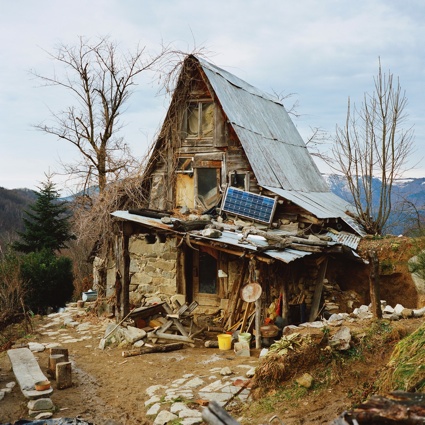 Antoine Bruy, Scrublands, Grand Prix Fotofestiwal 2014
Antoine Bruy, Scrublands, Grand Prix Fotofestiwal 2014
From 2010 to 2013, Antoine Bruy hitchhiked throughout Europe to meet men and women who chose to abandon their urban lifestyle and adopt self-sufficient life styles.
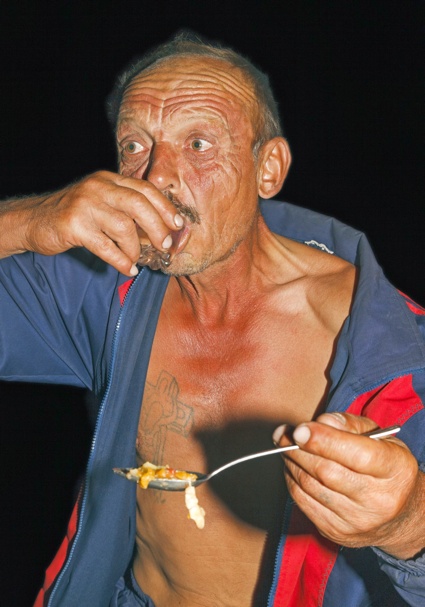 Kirill Golovchenko, Bitter Honeydew, Grand Prix Fotofestiwal 2014
Kirill Golovchenko, Bitter Honeydew, Grand Prix Fotofestiwal 2014
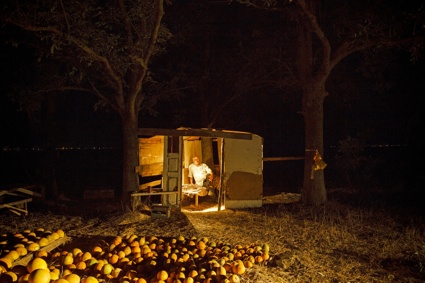 Kirill Golovchenko, Bitter Honeydew, Grand Prix Fotofestiwal 2014
Kirill Golovchenko, Bitter Honeydew, Grand Prix Fotofestiwal 2014
Kirill Golovchenko in photographed the people who spend their summers selling fruit and vegetables on the roadsides in Ukraine. When night comes, many of them retire in tents, trailers, or makeshift shacks erected 10 meters away from the road. Many come from Azerbaijan, Georgia, Armenia and mix with the locals in a microcosm made of people who want to make money to simply get along or save up and improve their living conditions in their respective homelands where most return for the winter months.
And now for an awful amount of photos:
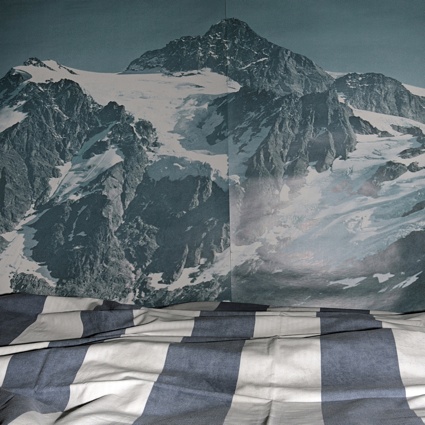 Michel le Belhomme, The Blind Beast, Grand Prix Fotofestiwal 2014
Michel le Belhomme, The Blind Beast, Grand Prix Fotofestiwal 2014
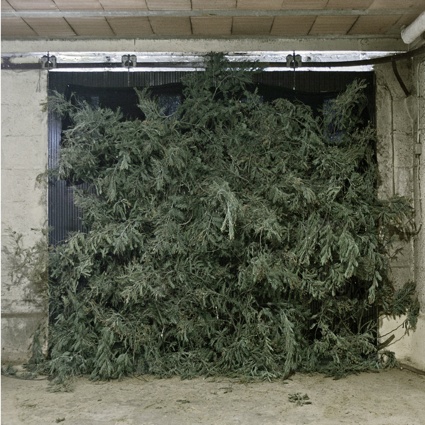 Michel le Belhomme, The Blind Beast, Grand Prix Fotofestiwal 2014
Michel le Belhomme, The Blind Beast, Grand Prix Fotofestiwal 2014
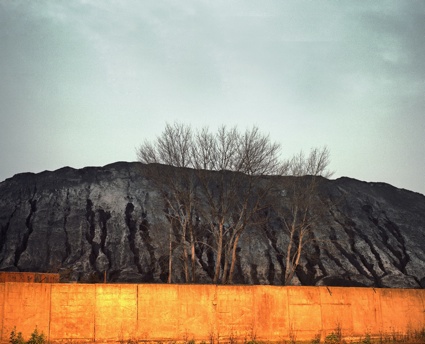 Agnieszka Rayss, No Man’s Land, Grand Prix Fotofestiwal 2014
Agnieszka Rayss, No Man’s Land, Grand Prix Fotofestiwal 2014
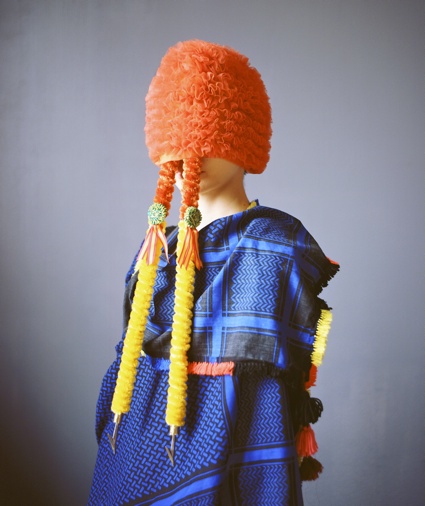 Marie Hudelot, The Legacy, camouflage aux banderilles, Grand Prix Fotofestiwal 2014
Marie Hudelot, The Legacy, camouflage aux banderilles, Grand Prix Fotofestiwal 2014
Screened at the festival:
Roger Ballen’s Asylum of the Birds
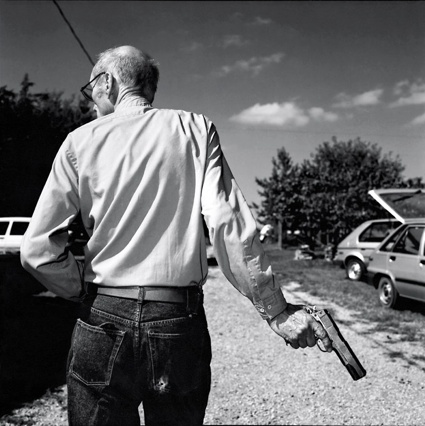 Volker Hinz, Poet and writer William S. Burroughs, 1987
Volker Hinz, Poet and writer William S. Burroughs, 1987
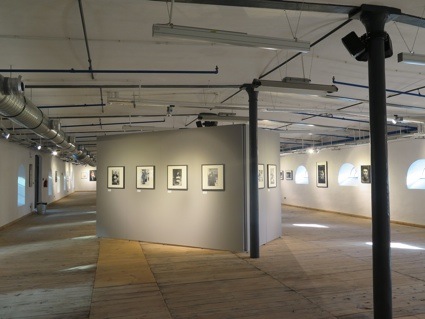 Inside Fabryka Sztuki
Inside Fabryka Sztuki
Lots and lots of big spaces that look abandoned:
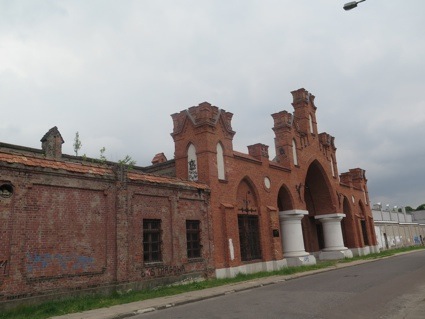
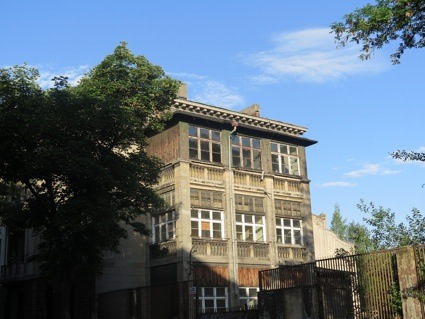
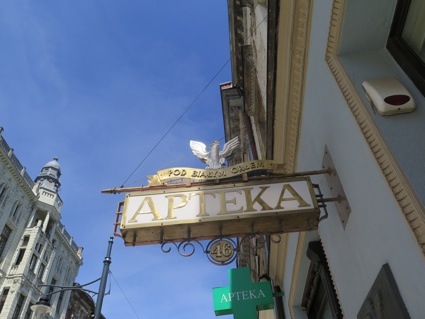
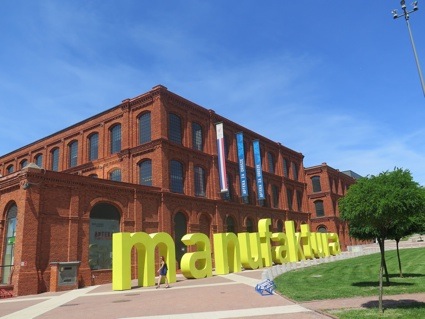 Manufaktura, the textile factory turned shopping wonderland
Manufaktura, the textile factory turned shopping wonderland
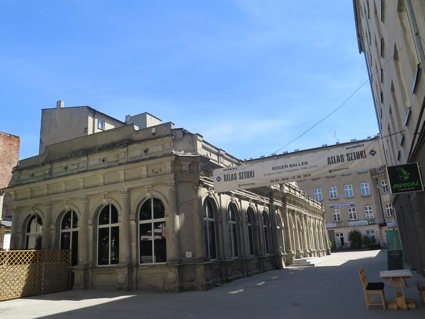 Atlas Sztuki (Art Atlas) gallery
Atlas Sztuki (Art Atlas) gallery
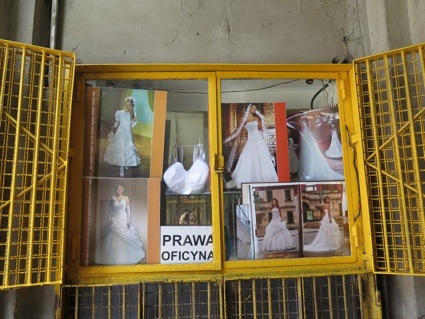
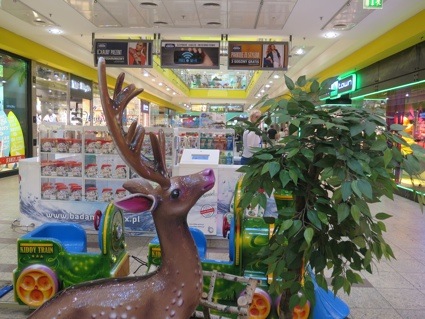
Also at the Fotofestiwal: A guide to life forms altered by the human species, Norilsk, daily life inside an environmental disaster.
